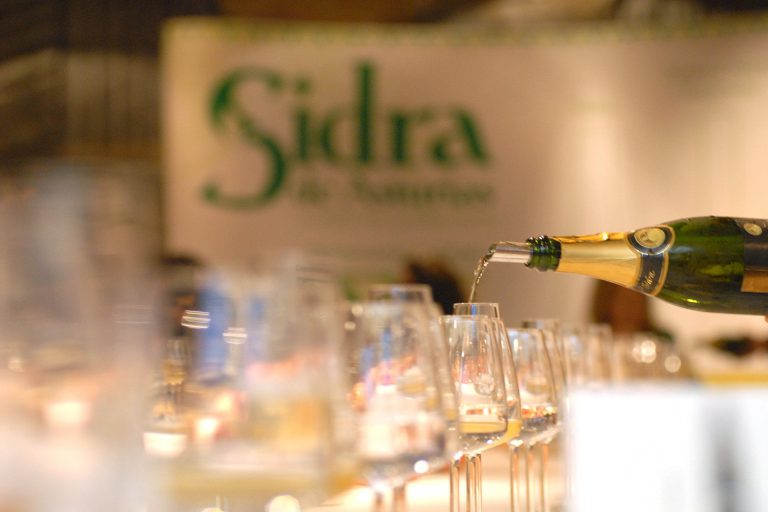Natural Sparkling Cider
It is usually a dry, Brut-type cider. Pale yellowish with golden tones, fine and constant bubbles that form a marked crown. Fruity aromas in harmony with toasted nuances, suggesting wood. Its taste is that of a dry product, slightly acid and low in alcohol, with a feeling of freshness that lasts.
Natural sparkling cider is obtained, as we have mentioned above, by a second fermentation process in a closed container. Thus, the carbonic gas present in natural sparkling cider with the designation of origin is always endogenous, never added. Depending on the container in which this second fermentation is completed, there are two production methods: the traditional method and the Charmat method.


In the traditional or champenoise method, we start from the clarified base cider, to which the liqueur de tirage (sugar and yeasts) is added before proceeding to its bottling. The cider undergoes the second fermentation in large stacks (with capacity for about 500 bottles) for several months, then it is further aged in racks. Here the bottles are turned and tilted until they are almost vertical, and the sediments produced during fermentation accumulate in the neck. Finally, the “degüelle” (disgorging) process consists of freezing the neck of the bottle where the sediment is located and then opening it. The pressure inside expels the ice together with a small amount of liquid, which is recovered by adding expedition liqueur.
To make natural sparkling cider using the Charmat or Granvas method, we also start from a clarified base cider, which is decanted into a pressure tank that also contains the liqueur de tirage. The second fermentation takes place in this tank, and when completed, the cider is filtered and bottled.
Either method produces a fresh and natural product that is perfect for pairing with fish, seafood, snacks and cheese. Natural sparkling cider is served in a tulip glass at a temperature between 6 and 8 degrees.



